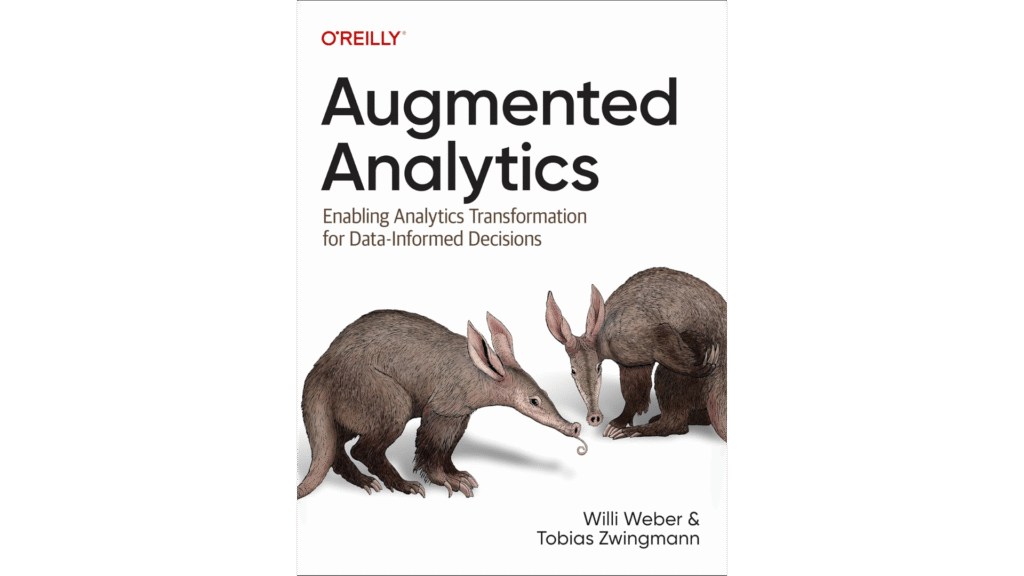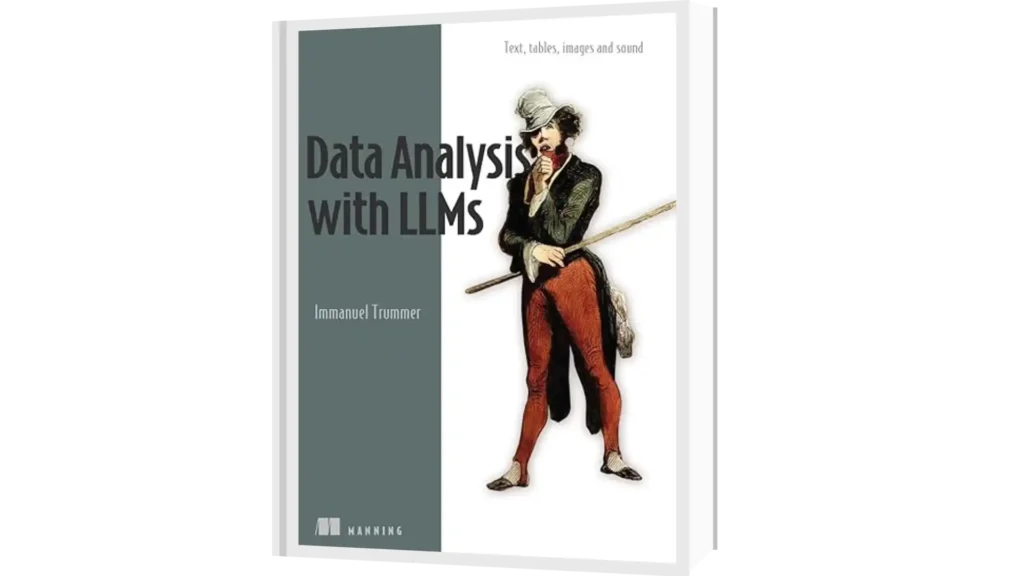
AI is evolving rapidly. Today’s models can understand text with near human-level fluency, advancing the field of natural language processing (NLP), and are becoming more capable at working with images and video. At the core of these developments is transformer architecture, a key innovation that changed how machines process and generate information across different formats.
Transformers for NLP and Computer Vision (affiliate link) by AI expert Denis Rothman is a practical and accessible guide to this powerful technology. With real-world examples, clear explanations, and working code, the book helps readers move from theory to application, building AI systems that are accurate, explainable, and ready for real use.
This article presents 10 impactful insights from Transformers for NLP and Computer Vision, demonstrating how transformer models are applied in natural language processing (NLP), computer vision, and generative AI.
New to NLP? Start with Mastering NLP: A Journey Through Sentiment Analysis.
Key insights from transformers for NLP and computer vision
1. Demystifying Transformer Architecture
The book starts with a deep dive into the fundamentals of transformer architecture, the model behind today’s most powerful AI systems. It explains how transformers moved beyond older recurrent methods by introducing attention mechanisms, allowing models to better understand sequences of data with greater speed and context awareness.
With step-by-step coverage of encoders, decoders, input embeddings, and multi-head attention layers, the book provides a solid foundation for understanding how transformers are built and why they outperform traditional models. These explanations are supported with practical examples and Hugging Face implementations.
2. Evaluating Transformers on Downstream Tasks
This book emphasizes the importance of downstream evaluation, moving beyond just training accuracy. You’ll learn how to assess a model’s true capabilities using metrics like F1 score, Matthews Correlation Coefficient (MCC), and human judgment. These are essential for measuring real-world performance.
It also introduces benchmark datasets from the SuperGLUE suite, such as SST-2 for sentiment, CoLA for grammaticality, and MRPC for paraphrase detection. These tasks help you understand how well transformer models perform on varied, domain-specific challenges after pretraining.
3. Fine-Tuning BERT for Real-World NLP
BERT is a transformer model built on stacked encoder layers that processes language bidirectionally to capture deep contextual meaning. Fine-tuning refers to the process of taking a pretrained model like BERT and adapting it to a specific task by training it further on a smaller, labeled dataset.
The book provides a detailed walkthrough of how BERT can be fine-tuned for practical applications such as sentiment analysis, sentence classification, and more. It includes hands-on steps for loading datasets, preparing inputs, configuring the training loop, and evaluating results.
You’ll also learn how to create a Python interface to interact with your customized BERT model, helping you deploy and experiment with it in real-world use cases.
4. Pretraining Transformers and Tokenizers from Scratch
The book Transformers for NLP and Computer Vision explains how to build a transformer model completely from scratch—without relying on prebuilt models. Using RoBERTa as a starting point, it guides you through training a custom tokenizer, creating your own dataset, and setting up a model architecture tailored to your project.
One hands-on example walks through the creation of KantaiBERT, a transformer model built entirely from the ground up. Another use case shows how to develop a generative AI assistant for customer support using domain-specific data.
These examples make the pretraining pipeline feel more accessible. From tokenizer setup to resource management and evaluation, this section gives you practical skills for building real-world transformer models—something that aligns well with projects you might explore on Hugging Face.
5. Fine-Tuning GPT Models for Generative Tasks
Fine-tuning GPT models becomes essential when default outputs don’t align with specific project needs. Whether it’s customer support, brand-specific tone, or domain-focused knowledge, custom fine-tuning allows GPT to perform better with prompt-response data.
This process involves preparing datasets in JSONL format, configuring the model, and managing jobs for deployment. The author also emphasizes risk management, highlighting when to fine-tune, when prompt engineering or RAG might be better options, and when the default model suffices. The key is balancing accuracy, cost, and compliance depending on your project’s goals.
6. Breaking the Black Box with Interpretability Tools
Understanding how transformer models arrive at decisions is vital for building transparent and trustworthy AI systems. The book introduces powerful interpretability tools that reveal the inner workings of large language models.
SHAP explains which features have the most impact on model predictions, while LIME offers localized insights for individual cases. Visual tools like BERTViz, LIT, and PCA enable intuitive exploration of attention mechanisms, embeddings, and hidden layers.
These tools helped clarify how models behave internally, making it easier to debug, validate, and explain their outputs. Interpretability plays a foundational role in creating AI systems that are dependable and understandable.
7. From Tokenization to Embeddings as Core Building Blocks
Tokenization is the foundation of how transformer models interpret language. The book breaks down different tokenization strategies, from basic splitting methods to advanced approaches like WordPiece and Byte Pair Encoding. Each method influences how models learn, represent, and process text.
It also highlights how pre-trained embeddings can be leveraged as powerful tools for tasks like semantic search and question answering, often without the need for full model fine tuning. Techniques using models like Word2Vec and Ada embeddings show how vector representations enable clustering, similarity search, and knowledge based retrieval.
This shift toward embedding based solutions offers a practical and resource efficient alternative to traditional model customization, making it easier to build scalable AI systems.
8. Purpose-Driven Design for Summarization with Transformers
Summarization isn’t just about trimming text. It requires models specifically designed for the task. The book explains how T5, with its encoder decoder architecture, handles summarization by treating every NLP task as a text to text problem. By adjusting the prefix in the input, the model can switch between functions like summarization, translation, and question answering.
It walks through using T5 for summarizing real world content, including legal and general documents, and contrasts its output with ChatGPT’s approach. This comparison highlights how different architectures interpret and summarize information differently, deepening the understanding of model design choices in practical use.
9. Managing Risks in Large Language Models
The book highlights why it’s more important than ever to manage risks in powerful transformer-based AI systems. It explains key concerns such as hallucinations, disinformation, harmful content, privacy issues, and cybersecurity threats.
It also introduces practical ways to reduce these risks. These include rule-based filters, Retrieval-Augmented Generation (RAG), and Reinforcement Learning with Human Feedback (RLHF). Together, these methods help make AI systems safer, more accurate, and more aligned with human values.
10. Expanding Transformers to Vision and Multimodal Intelligence
The book goes beyond natural language and shows how transformers are now powering tasks in computer vision and multimodal AI. It introduces models like Vision Transformer (ViT), which breaks images into small patches and processes them like text. CLIP is also covered, connecting images and text through shared embeddings, along with DALL·E, which creates images from text prompts.
More advanced examples include Stable Diffusion for generating images and videos, and tools like AutoTrain that let you build vision models without writing code. These developments show how transformers are evolving into a common architecture for AI that works across text, images, and video.
Who This Book Is For
This book is ideal for:
- Data scientists and ML engineers ready to apply theory to real-world projects
- Developers working across NLP, computer vision, or both
- AI practitioners exploring tools like Hugging Face, Vertex AI, or fine-tuned transformers
- Anyone committed to building explainable, scalable, and production-ready AI systems
If you’re comfortable with Python and want to build smarter AI with real applications, Transformers for NLP and Computer Vision is a well-aligned guide.
New to AI? Start with AI Fundamentals: A Beginner’s Guide to Artificial Intelligence
Final Thoughts
If you’re working in applied AI, Transformers for NLP and Computer Vision is an essential resource. It bridges theory and practice, guiding you through fine-tuning, interpretability, and safe deployment of transformer models across NLP, vision, and multimodal tasks.
The book doesn’t stop at basics. It also dives into forward-looking concepts like Vertex AI, PaLM 2, and generative ideation—making it valuable for staying current as the field evolves.
Whether you’re building with Hugging Face models or exploring how transformers can power your next AI project, this guide equips you with practical tools and future-facing insights.
Buy the Book
Transformers for NLP and Computer Vision (affiliate link) by Denis Rothman is available on Amazon and Packt. If you’re ready to explore transformers in real-world NLP and vision tasks, this book is a solid, practical guide worth having.
Disclosure: This article about Transformers for NLP and Computer Vision contains affiliate links. If you buy through these links, we may earn a small commission at no extra cost to you. It helps us keep creating free content on Noro Insight.



Dear Noro,
Thank you for your your high quality review!
Denis
Thank you so much, Denis. I truly appreciate your kind words. It’s an honor to highlight your work.